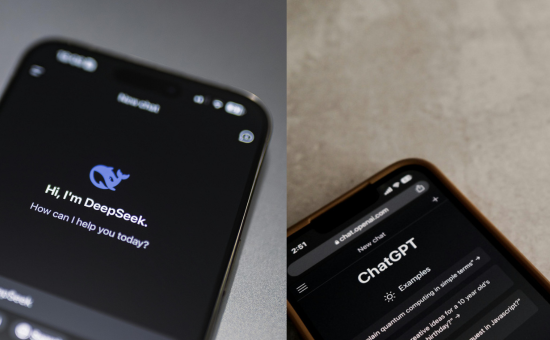ChatGPT vs DeepSeek AI 2025:- By the year 2025, ChatGPT and DeepSeek AI have established themselves as two of the foremost advanced language models in the realm of artificial intelligence.

This article provides a detailed comparative study, exploring their underlying technologies, performance metrics, and diverse practical applications across various domains
1. Core Concept and Development Journey
ChatGPT: OpenAI’s Flagship Achievement
ChatGPT was developed by OpenAI, a San Francisco-based company. Its development journey began withGPT-3 in 2020 and progressed to GPT-4 in 2023. By 2025, the arrival of GPT-5 is anticipated. This model is primarily designed for text-based interactions, though its latest versions include multimodal capabilities as well.
DeepSeek AI: An Exemplary Chinese Technology
DeepSeek AI was developed by a leading AI research institute based in China. Its first version was released in 2023, and it is expected to reach its third major version (V3) by 2025. This model is particularly optimized for large-scale text processing and analysis.
2. Comparison of Technical Specifications
Architecture and Training
ChatGPT utilizes a transformer-based architecture trained on an enormous amount of internet data. In contrast, DeepSeek AI’s model is trained in a more focused manner on specific datasets in Chinese and English languages.
Context Window Capacity
The most significant technical advantage of DeepSeek AI is its 128K token context window, which far exceeds ChatGPT’s 32K token capacity. This feature proves especially useful in analyzing lengthy documents and managing large codebases.
3. Performance Evaluation
Language Comprehension and Generation
Both models demonstrate high levels of language understanding. However, ChatGPT excels in creative writing and multilingual translation, whereas DeepSeek AI shows greater precision in processing technical and scientific content.
Speed and Efficiency
Preliminary tests indicate that DeepSeek AI offers faster response times in certain cases, particularly when handling complex queries. This is likely due to its more optimized architecture.
4. User Experience and Features
Interface Design
ChatGPT has earned praise for its intuitive and user-friendly interface. Conversely, DeepSeek AI’s interface appears more functional and tailored to technically proficient users.
Pricing Model
ChatGPT follows a freemium model where advanced features are subscription-based. DeepSeek AI currently offers a fully free service, making it an attractive option for budget-conscious users.

5. Specific Use Cases
Academic Research
- DeepSeek AI’s extensive context window makes it particularly useful for researchers who need to analyze long academic papers and theses.
Software Development
- Both models are capable of code generation and debugging. However, DeepSeek AI’s larger context window makes it more suitable for extensive software projects.
Content Creation
- ChatGPT is more appropriate for creative writing and marketing content, especially in cases requiring linguistic nuances and stylistic elements.
6. Security and Privacy Considerations
Both platforms implement advanced measures to secure user data. However, since ChatGPT is operated by an American company, some users may have concerns regarding data sovereignty. On the other hand, DeepSeek AI operates under Chinese data laws.
Read Also:- The History of ChatGPT: How OpenAI Created the World’s Smartest Chatbot
7. Future Directions and Prospects
ChatGPT is likely to focus on enhancing multimodal capabilities in the future, while DeepSeek AI is working toward increasing context window size and expanding language support. Both models are expected to progress toward Artificial General Intelligence (AGI).
Read Also:- How to Use Canva AI’s Magic Studio for Easy Website and Landing Page Design
Conclusion
This comparative study clearly shows that both AI models have their unique strengths. ChatGPT appears to be a better choice for creative tasks and multilingual applications, whereas DeepSeek AI is more suitable for technical analysis and large-scale data processing. The final choice depends on the user’s specific needs and workflow.
This analysis underscores the growing importance of diversity and specialization in AI technology. In the future, we can expect these models to become even more refined and tailored to specific industry requirements.





